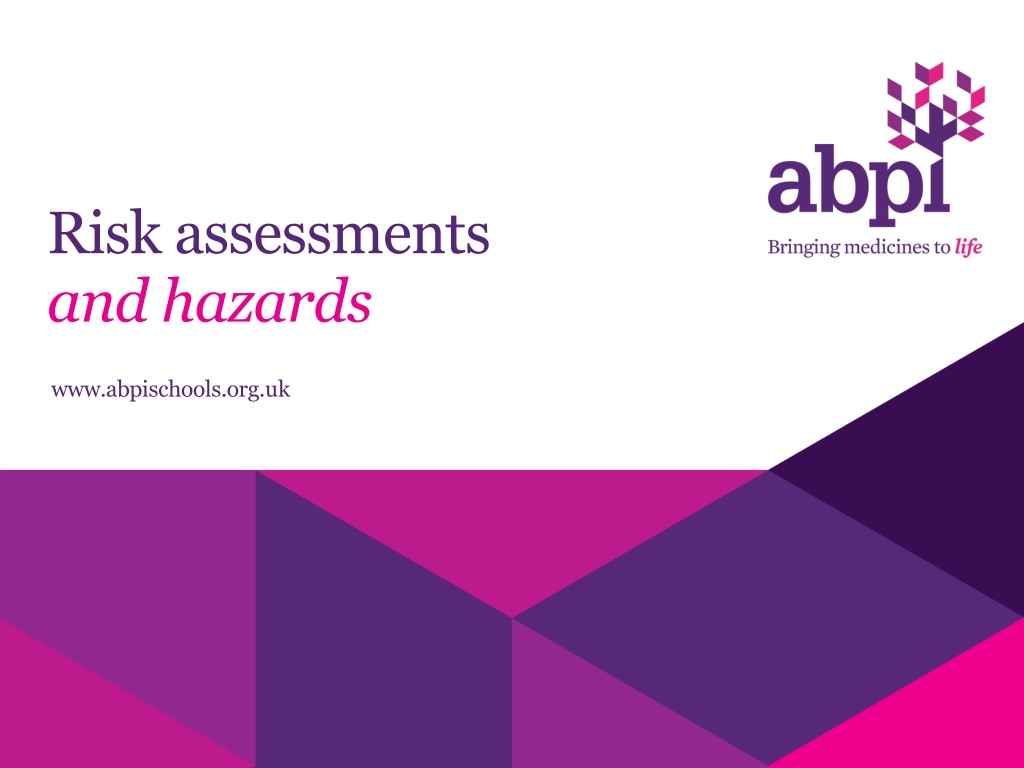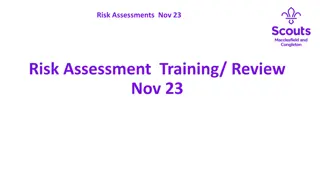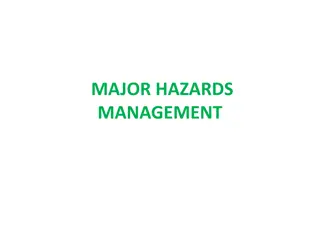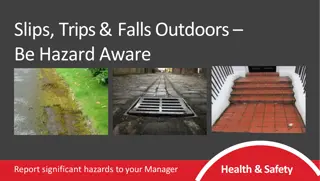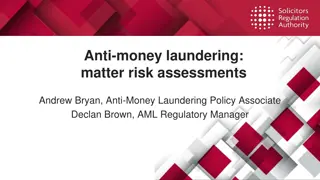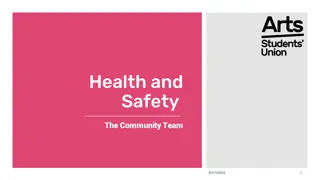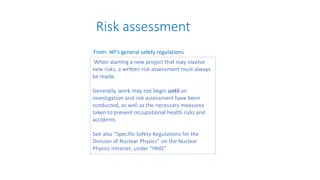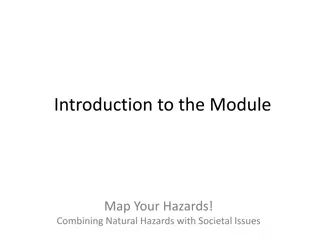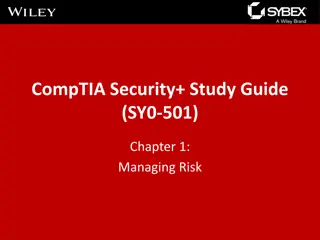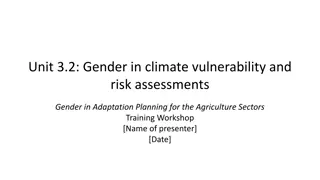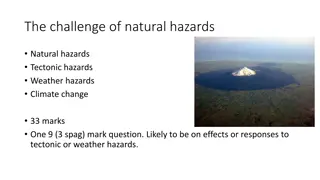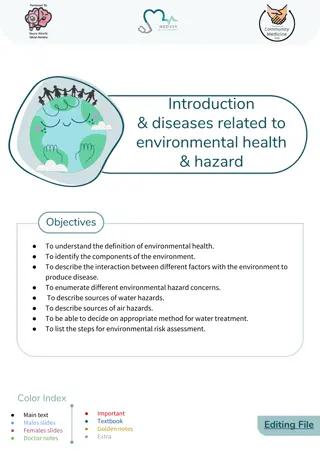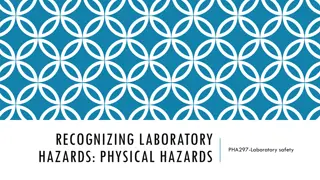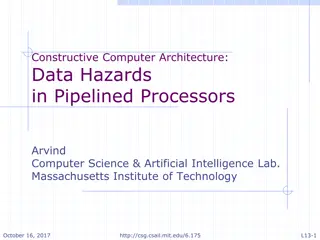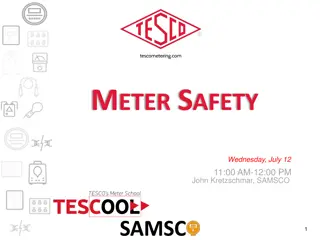Understanding Risk Assessments and Hazards in Everyday Life
Risk assessments involve evaluating potential hazards and assessing the likelihood and consequences of those hazards. In the context of crossing the road, different scenarios demonstrate varying levels of risk based on factors such as vehicle speed, pedestrian behavior, and road conditions. By understanding these risks, individuals can make informed decisions to stay safe in everyday situations.
Download Presentation

Please find below an Image/Link to download the presentation.
The content on the website is provided AS IS for your information and personal use only. It may not be sold, licensed, or shared on other websites without obtaining consent from the author. Download presentation by click this link. If you encounter any issues during the download, it is possible that the publisher has removed the file from their server.
E N D
Presentation Transcript
Risk assessments and hazards www.abpischools.org.uk
Risk Assessments Hazard: something with the potential to cause harm Risk: the likelihood and the consequences of that hazard happening
Risk Assessments Crossing the road A moving car is a hazard. The consequence is that it could kill you. 1. The risk is very high if you stand in the middle of a motorway and the car is travelling at 70 mph. Magnitude of hazard or risk Hazard Risk High Medium Low Situation 1 2 3 4 5
Risk Assessments Crossing the road A moving car is a hazard. The consequence is that it could kill you. 2. The risk is low if you are on the pavement of a quiet cul-de-sac and the car is moving very slowly. Magnitude of hazard or risk Hazard Risk High Medium Low Situation 1 2 3 4 5
Risk Assessments Crossing the road A moving car is a hazard. The consequence is that it could kill you. 3. On an urban high street the risk is high if the car is travelling over the speed limit and you cross the road without looking. Magnitude of hazard or risk Hazard Risk High Medium Low Situation 1 2 3 4 5
Risk Assessments Crossing the road A moving car is a hazard. The consequence is that it could kill you. 4. The risk is medium if the driver is observing the speed limit and you run across its path estimating a safe gap. Magnitude of hazard or risk Hazard Risk High Medium Low Situation 1 2 3 4 5
Risk Assessments Crossing the road A moving car is a hazard. The consequence is that it could kill you. 5. The risk is low if the car is travelling slowly and you cross well before it using a pedestrian crossing. Magnitude of hazard or risk Hazard Risk High Medium Low Situation 1 2 3 4 5
Risk Assessments Crossing the road A moving car is a hazard. The consequence is that it could kill you. Magnitude of hazard or risk Hazard Risk 1. The risk is very high if you stand in the middle of a motorway and the car is travelling at 70 mph. 2. The risk is low if you are on the pavement of a quiet cul-de-sac and the car is moving very slowly. 3. On an urban high street the risk is high if the car is travelling over the speed limit and you cross the road without looking. 4. The risk is medium if the driver is observing the speed limit and you run across its path estimating a safe gap. 5. The risk is low if the car is travelling slowly and you cross well before it using a pedestrian crossing. High Medium Low Situation 1 2 3 4 5
Risk Assessments One way to create a risk assessment is to break down any experiment or activity into its parts and identify the hazards associated with each. For example, think about boiling an egg for breakfast. The component parts include: Select the egg Boil the egg in water for 4 minutes Remove the egg from the water Cut the top off the egg Two of these could lead to death !
Activity Hazard Controls to reduce risks Risk before and after controls
Activity Hazard Controls to reduce risks Risk before and after controls Select the egg Boiling the egg in water for 4 minutes Remove the egg from the water Cut the top off the egg
Activity Hazard Controls to reduce risks Risk before and after controls Select the egg Salmonella present in old eggs. Food poisoning. High Boiling the egg in water for 4 minutes Boiling water. Scalding from putting hand in water or splashes. Risk of burning hands from touching hot metal. Risk of burning hands when turning on hot plate or lighting gas ring. Ignition of flammable materials from hot plate or gas ring. High Remove the egg from the water Boiling water. Scalding from putting hand in water or splashes. Risk of burning hands from touching hot metal. High Cut the top off the egg Sharp knife causing flesh wounds. High
Activity Hazard Controls to reduce risks Risk before and after controls Select the egg Salmonella present in old eggs. Food poisoning. Use fresh eggs. Store them in an effective fridge High Low Boiling the egg in water for 4 minutes Boiling water. Scalding from putting hand in water or splashes. Risk of burning hands from touching hot metal. Risk of burning hands when turning on hot plate or lighting gas ring. Ignition of flammable materials from hot plate or gas ring. Put egg into cold water by hand, or into boiling water using a spoon. Use a pan with an insulated handle. Keep the pan away from the front edge of the cooker. Keep young children away from the area. Keep flammable materials and bare skin away from heat sources. Only experienced people to light gas rings. High Low Remove the egg from the water Boiling water. Scalding from putting hand in water or splashes. Risk of burning hands from touching hot metal. Remove egg using a spoon. Use a pan with an insulated handle. High Low Cut the top off the egg Sharp knife causing flesh wounds. Use a blunt knife of edge of a spoon. Hold the egg steady in an egg cup. High Low
Write a risk assessment for the synthesis and isolation of the fertiliser ammonium sulphate by neutralising sulphuric acid with ammonia using the following procedure. Measure out sulphuric acid (50ml) into a flask. Use methyl orange indicator and titrate with aqueous ammonia solution from a burette. Repeat the process without the indicator using the same volumes from the trial run. Boil or evaporate off the water to give a solid product. You will need to look at hazard data from CLEAPSS (CD-ROM or on a school network) or a chemical supplier s catalogue.
Activity Hazard Controls to reduce risks Risk before and after controls
Activity Hazard Controls to reduce risks Risk before and after controls Using sulphuric acid Using aqueous ammonia solution Use of methyl orange indicator Pipetting sulphuric acid solution Filling a burette with ammonia solution Boiling or evaporating off the water from the solution Disposal of the solution from the trial run Disposal of excess ammonia solution in the burette
Activity Hazard Controls to reduce risks Risk before and after controls Using sulphuric acid VERY CORROSIVE.Causes severe burns. Solutions equal to or stronger than 1.5 M should be labelledCORROSIVE. Solutions equal to or stronger than 0.5 M but weaker than 1.5 Mshould be labelled IRRITANT. High Using aqueous ammonia solution CORROSIVE, DANGER TO THEENVIRONMENT. Causes burns. Solutions with a concentration greater than or equal to 6 M should be labelled CORROSIVE. Solutions of stronger than or equal to 3 M but weaker than6 M should be labelled IRRITANT. If swallowed, causes severe internal damage. The vapour (ammonia gas) is toxic and extremely irritating to the eyes and lungs. Solutions equal to or stronger than 14 M are very toxic to the aquaticenvironment. High Use of methyl orange indicator Solid Toxic by inhalation and contact with skin. Solution may stain hands. High
Pipetting sulphuric acid solution Sulphuric acid see above. Swallowing corrosive liquid Spillage due to poor technique. High Filling a burette with ammonia solution Ammonia see above. Danger of spilling the ammonia as it is poured into the narrow burette and inhaling irritant fumes. Falling from stool or bench whilst holding ammonia. Inhaling irritant fumes. High Boiling / evaporating off the water from the solution Burns from heat source. Ignition of flammable materials from heat source. Splashing of hot liquid. Any excess ammonia will produce a highly irritant vapour. Any excess sulphuric acid will be concentrated in the process and increase the hazard see above. High
Activity Hazard Controls to reduce risks Risk before and after controls Using sulphuric acid VERY CORROSIVE.Causes severe burns. Solutions equal to or stronger than 1.5 M should be labelledCORROSIVE. Solutions equal to or stronger than 0.5 M but weaker than 1.5 Mshould be labelled IRRITANT. Use dilute aqueous solution of 1 mol dm-3 Avoid spills by careful working and having a tidy work space. Wear gloves, lab coat and safety spectacles. High Low Using aqueous ammonia solution CORROSIVE, DANGER TO THEENVIRONMENT. Causes burns. Solutions with a concentration greater than or equal to 6 M should be labelled CORROSIVE. Solutions of stronger than or equal to 3 M but weaker than6 M should be labelled IRRITANT. If swallowed, causes severe internal damage. The vapour (ammonia gas) is toxic and extremely irritating to the eyes and lungs. Solutions equal to or stronger than 14 M are very toxic to the aquaticenvironment. Use dilute aqueous solution of 1 mol dm-3 Avoid spills by careful working and having a tidy work space. Work in a fume cupboard to contain irritant vapour. Wear gloves, lab coat and safety spectacles. High Low Use of methyl orange indicator Solid Toxic by inhalation and contact with skin. Solution may stain hands. Use a few drops of a dilute solution in water. Wear gloves. High Low
Pipetting sulphuric acid solution Sulphuric acid see above. Swallowing corrosive liquid Spillage due to poor technique. The user must be trained in the use of a pipette using water. Use a pipette filler (bulb or pi-pump). Refer to CLEAPSS 10.10.3. High Low Filling a burette with ammonia solution Ammonia see above. Danger of spilling the ammonia as it is poured into the narrow burette and inhaling irritant fumes. Falling from stool or bench whilst holding ammonia. Inhaling irritant fumes. See above. Position the top of the burette at a convenient level. Do not stand on a stool to fill it. Use a funnel and avoid air locks by lifting it slightly out of the top of the burette. Pour roughly the right amount of ammonia solution into a conical flask and fill the burette from this not from a stock bottle. High Low Boiling / evaporating off the water from the solution Burns from heat source. Ignition of flammable materials from heat source. Splashing of hot liquid. Any excess ammonia will produce a highly irritant vapour. Any excess sulphuric acid will be concentrated in the process and increase the hazard see above. If a Bunsen burner is used it should be lit by a trained operator. Operators must avoid close contact with heat sources and hot equipment. Heat sources must be kept away from flammable materials. To avoid irritant vapour and the hazard of concentrated sulphuric acid, the boiling or evaporation process must be done in a fume cupboard. Methyl orange changes colour at acidic pH (3.2-4.4) and so there will be excess acid present at the neutralisation point. Since an excess of ammonia can be boiled off but sulphuric acid can t, a wise precaution is to add a small excess of ammonia solution (about 0.5 ml) over the neutralisation volume. High Low
The safety of a workplace is increased by the presence of safety signs. There are standards for sign design so that everyone recognises them easily. International symbols will replace the current European symbols by 2015, they have similar meanings Match the symbols on the next slide to their meanings
Toxic 1 Irritant 2 3 Flammable 4 Oxidising 5 Dangerous for the environment Corrosive 6
Toxic 1 Irritant 2 3 Flammable 4 Oxidising 5 Dangerous for the environment Corrosive 6
